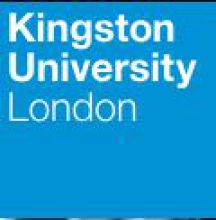One in five London universities lost money in the past academic year as many institutions struggled to fill courses, figures show.
Eight higher education institutions in London posted operating deficits in 2017-18, while several others reported far smaller surpluses than in previous years, according to a Times Higher Education analysis of annual financial statements.
Among those to report losses were Goldsmiths, SOAS and Birkbeck, all part of the University of London, as well as the University of East London and Rose Bruford College of Theatre and Performance.
The new statistics highlight the growing financial strain on UK universities, with those in London often facing higher costs related to staff salaries and estates. This year, institutions will be hit by unanticipated major increases in employer pension costs – with modern universities set to see contributions to the Teachers’ Pension Scheme rise by 44 per cent.
London Metropolitan University posted the largest operating deficit – £20 million – of any higher education institution in the UK capital. Its total income fell by about £7.7 million to £94.3 million in 2017-18, although expenditure was £103.8 million, down from £106 million in 2016-17.
Much of the deficit was caused by one-off costs, including £10.6 million associated with the relocation of its Moorgate law and business school to its Holloway Road campus.
Without these costs, including £2 million spent on staff restructuring, London Met’s “core business made an operating surplus of £1.5 million…achieved, in part, due to a reduction in expenditure and improving efficiency”, a spokesman said.
The institution was “in the final phase of a planned restructuring programme that has resulted in a forecasted 7.6 per cent reduction in overall student numbers and a fall in income”, he added. New initiatives and courses, plus continued efficiency efforts, will “help us return to an overall surplus within the next three years,” the spokesman said.
Kingston University posted a deficit of £13.1 million, despite reducing expenditure by £10.2 million from 2016-17, when it had a £14.2 million loss. These savings showed the impact of the institution’s strategy as it “re-configures the cost base to meet a reduced student body with a lower income”, the accounts state.
In a statement, Kingston said that it had “recruited to its planned target student numbers in each of the past two years and is reducing its deficit in accordance with its approved financial plan”. Last year’s deficit included “costs associated with planned activities to reorganise the university to enhance academic performance and refocus its course portfolio”. Without this and an adjustment for pensions, the “underlying deficit for the year was £3.7 million”, the university added.
SOAS slipped into deficit in 2017-18, registering a £1.2 million loss. If pension changes and endowment income are excluded, its operating deficit stood at £7.1 million. “This level of deficit is however not sustainable and [required] swift significant actions to generate new income streams and bear down on operating costs,” the accounts state.
St Mary’s University, Twickenham, London, had a £6 million deficit – an 11.4 per cent loss margin given that its income was £52.5 million in 2017-18.
Its deficit reflected “one-off costs incurred following a recent restructure, streamlining the institution into two faculties, and continued investment in the student experience notwithstanding a demographically driven decline in student numbers”, it said.
Without these costs, it had an “underlying operating surplus [and] a very strong balance sheet, with one of the lowest debt ratios in the sector”, and it was “on track to show a material underlying operating surplus this year”.
Register to continue
Why register?
- Registration is free and only takes a moment
- Once registered, you can read 3 articles a month
- Sign up for our newsletter
Subscribe
Or subscribe for unlimited access to:
- Unlimited access to news, views, insights & reviews
- Digital editions
- Digital access to THE’s university and college rankings analysis
Already registered or a current subscriber? Login










